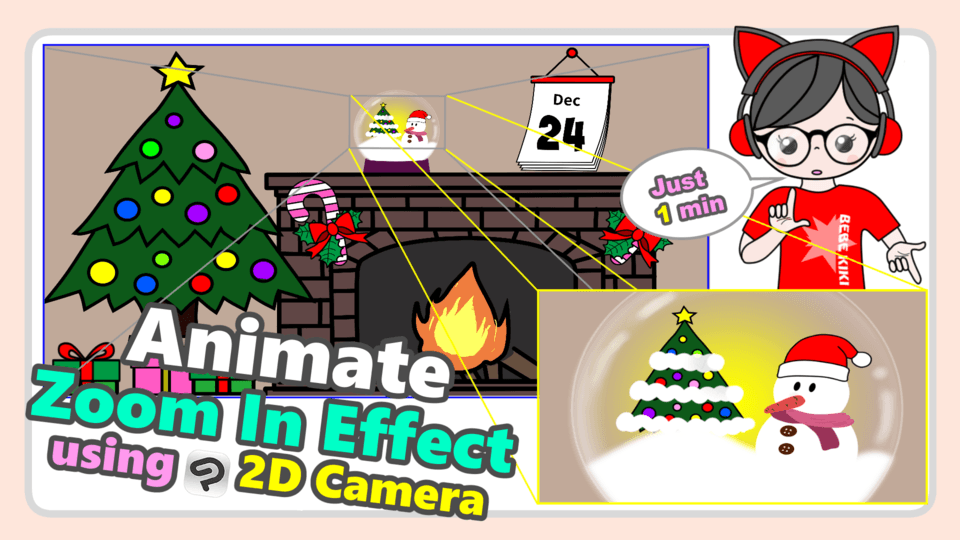8 Techniques for Scene Transitions in Webtoons
Webtoons and page based comics might not seem so different at first glance. But the truth is that they offer an entirely different reading experience. The vertical scroll format rarely presents the reader with more than two panels visible at a time. This both enables and demands different ways of building tension and handling structural elements of a comic, such as scene transitions.
This tutorial will present 8 techniques for creating scene transitions, both from a technical perspective, as well as a conceptual one.
If you'd like to watch a video version of this tutorial, you can find it here:
Basic Tips
First of all, if you’re just starting out with creating webtoons, I would encourage you to first check out my other tutorial, “Making Comics for both Print and Webtoon”, which goes over some of the basics.
Second, an important thing to always keep in mind when working on webtoons is how they would look to someone reading the comic on their phone or tablet. In the past, I’ve found it helpful to draw up a little red rectangle in the dimensions of a typical phone screen and overlaying it above the webtoon, to get an idea of what sections of the art will be visible. However, as of Version 1.10.5, Clip Studio Paint will have added the “On-screen area” option under the “View” menu, which enables this guideline in a much more convenient way!

With this in mind, let’s move on to a few concrete examples of scene transition techniques that you can use:
Technique #1 - Zooming In and Out
This is one of two basic techniques, and you’ll see me using it in combination with a few of the others I talk about in this tutorial.
It’s pretty straightforward: When establishing a scene, I like to zoom into it gradually. Likewise, when ending a scene, I like to zoom out of it gradually. This helps communicate to your readers a certain sense of focus. If you want to look at something interesting, you may walk closer to it or hold it nearer to your face to inspect it. When we use this technique in webtoons, we are performing this action for our readers and telling them: “hey, something is about to happen” or “okay, that's it for this scene”.
Technique #2 - Color
The other clearest way to transition between scenes is to set them apart visually. One of the easiest ways to do so is to use distinct colors between them. Of course, brightness is another option, which becomes especially relevant if your webtoon is in grayscale only.
For example, here I show Enrico in his room - with warm, pastel green overtones. Meanwhile, Dodger is laying on a brown carpet. This isn’t the most drastic example of varying colors, but it’s a useful reminder that you don’t always need to beat your readers over the head with these techniques and even subtle applications can communicate your intent well.
You can even use color to connect two separate locations if a certain action is happening in both of them. Here, I am using an euphoric yellow background to convey Enrico’s excitement reaching Dodger, even if it’s just through text messages:
Technique #3 - Entering the Mind
Let’s move on to more advanced techniques.
This one is useful for a scene transition to a flashback or scenes that take place in a character’s imagination.
Start with a panel that focuses on your character, then add a panel that zooms in closer to their face. If you’d like, you can add even more panels that zoom in further, and accompany them with dialogue.
It can be useful to use similar compositions when creating the last panel of a “real” world scene and the first panel of a memory or imagined scene, especially in regards to the placement of your character. They don’t have to look the same or even wear the same expression in both panels. However, the character should be the clear focus of each scene - an anchor point for the readers that helps them create the connection that this is a memory or a daydream.
In my example above, I deviate from this rule, because I’ve already established that my character Dodger can have visions. Additionally, the focus of his vision here is Sammy. I didn’t feel the need to show him as a central element of the panel and merely showed him from the back, observing Sammy.
It can be useful to add a gradient behind these panels to transition, for example, from a light background to a dark background for the duration of the remembered or imagined panels. This helps communicate to your readers that every panel in front of a different background color is not part of the current timeline or reality.
Of course, you are not limited to using gradients! In my example at the start of this section, I used a specific lineart effect and a unique color palette to achieve the same end result.
You could also combine the gradient tool with the layer tone option to create unique effects in a fast and easy manner.
I highly recommend checking out this tutorial to learn more, specifically the “Toned Gradients” section:
You also don’t always need to make this type of transition a lengthy one either, if you don’t intend for it to be dramatic. Shortened versions of this technique are useful for things like gags, or characters having sudden realizations.
Here, I briefly show a flashback without a zoom-in on Dodger’s face. However, his expression looking directly at the viewer, the vignette effect, and thought-bubble style borders on the flashback panel all help communicate to the reader that this is a memory.
Technique #4 - Multiple Actions in a Single Scene
With this technique, you can achieve an almost animated effect. By showing multiple stages of a single action, or multiple actions that are connected, you can place an emphasis on these actions.
Here is one example:
I wanted to establish a calm early morning vibe to the scene, so I decided to show a bird flying through the air. Because the sky offers a lot of vertical space, I was able to show the same bird at different stages of this action.
Also, at the start of the scene, we don’t know the context of what's happening yet and only when the bird lands at a recognizable landmark, the readers will understand how it relates to the story. This can help create a sense of intrigue.
The same technique can also be applied in a single background panel to either emphasize calm surroundings, such as in the example before, or very fast actions, such as in this concept:
Alternatively, you can also use multiple panels that keep the background and composition the same in each panel, with only the actions of the characters changing. If you are unable to use the single background panel technique for compositional reasons, this option is equally valid:
You could also transition locations by showing a character beginning the action in one panel, then showing various stages of the action outside of any panel, and finally, completing the action in yet another panel.
Technique #5 - Connecting Locations with Text
When showing the same event happening in different locations or being viewed from different vantage points, it can be useful to use text or colors to convey the connection between these two scenes.
For instance, here are two examples where I am using text to connect these characters to each other. In both cases, the text leaves or extends past the panels showing the characters. This helps convey to readers that this text - this dialogue or sound effect - quite literally extends past the confines of the depicted locations.
If you’ve watched my other webtoon tutorial, you’ll know that Clip Studio Paint has a dedicated panel tool. It’s very helpful in letting you keep your webtoon files organized and clean. However, keep in mind that if you are using this scene transition technique, you will have to make new layers that are located ABOVE rather than inside the panel folders so that your art will show up outside of the panels.
Technique #6 - Establishing Backgrounds Slowly
If you want to switch scenes between two settings, it can sometimes make sense to do so slowly.
For example, this means that if you are switching from a scene set outside to a scene set inside at a different location, you might want to first show the different location from the outside, before showing the inside.
Here, I’ve also added an extra panel between the exterior and interior shot to further establish the mood of the scene. The dripping of water will only be heard in a quiet environment, which this panel helps communicate.
Keep in mind that I’ve also chosen the size of the exterior panel to completely fill a reader’s smartphone screen. Big panels like this help the readers linger on a scene and make them feel more important. With transitions between different locations, this can be a helpful technique to get your readers’ attention and emphasize this transition.
Technique #7 - Communicating the Passage of Time
Panels that show background scenery are a useful way of illustrating the passage of time. For instance, you could change the lighting, the weather or even details such as shops closing and cars leaving parking lots. The possibilities are endless!
Side-note: If you want to change a scene’s lighting, especially in a subtle way, it can be helpful and faster to start out by using correction layers rather than fully recoloring the scene from the ground up. For more information on correction layers, I suggest this tutorial:
When using this technique, it’s important to keep in mind the spacing between panels! If you put panels close to one another, readers might scroll by them quickly, which might make them feel like these panels take place over a shorter period of time. If you space out the panels wider, and readers take a longer time to scroll past them, this will increase the sense of time passing!
Technique #8 - Building Intrigue by Showing Dialogue First
I’ve already talked about this in my other tutorial focusing on webtoons, but I’d like to repeat this technique here. You can increase the surprise of revealing a new scene or location by first showing dialogue that teases the scene.
You do this by making sure the dialogue takes up an entire phone screen’s worth of space, so that your readers will have to think about this dialogue for a moment. During this moment, they might wonder about the implications and build the scene in their mind, whether consciously or subconsciously!
After this, you are able to show the full scene - and either surprise your readers by subverting their expectations or exciting them when their prediction turns out to be true!
Thank You!
We've arrived at the end and I hope these eight techniques will be helpful and inspiring to keep in mind when creating your webtoon. Of course, there are many more options with which you could handle scene transitions. One of the best ways to learn them is by reading webtoons with an analytical approach and trying to figure out what kind of technique leaves an impression on you and why!
Do you have any favorite transition techniques? Feel free to discuss them in the comments section! As always, thank you for reading!
Oh, and if you enjoyed what you saw here, why not check out my comic?
























Comment